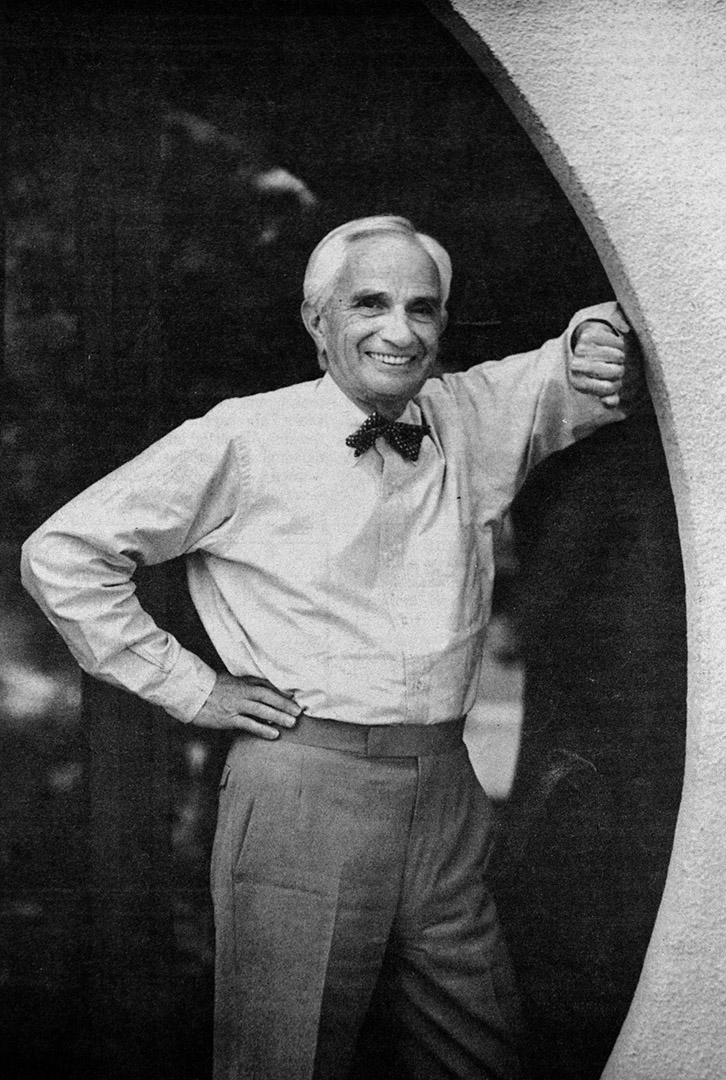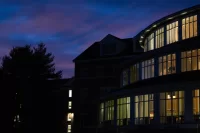
As a group of Tibetan nuns scraped grains of sand onto the colorful mandala steadily growing on a low table in Peter J. Gomes Chapel, Venerable Tenzin Dasel ’88 offered a gentle spoiler alert on the impermanence of things.
Soon, the mandala, a geometric configuration of symbols used in Tibetan Buddhism and other spiritual practices, would be complete. It would be exquisite, planned out in the minds of a handful of nuns from Jangchub Choeling Nunnery in Mundgod, South India, “to the grain of sand,” Dasel said on Wednesday.

And by Friday evening, it would be gone, poured into Lake Andrews in a ritual enacting the final words of the Buddha: “Impermanence is inescapable. Everything vanishes.”
All week long the nuns, who are on a tour of the United States — they’ve already visited Minnesota, Kentucky, and Ohio — had been working on the mandala. On Monday they’d chalked out a design of a Medicine Buddha, specifically chosen for this stop on their tour.
The nuns worked from memory, without diagrams, imagining where every grain of sand would go in the mandala, choosing from small dishes nearby holding more than a dozen colors including hues of blues, greens, pinks, yellow, and orange.
They filled their tools, conical metal implements that allow them to tap out grains of sand one at a time, and began growing the intricate design from the middle out, their rhythmic tapping and scraping filling the quiet of Gomes.
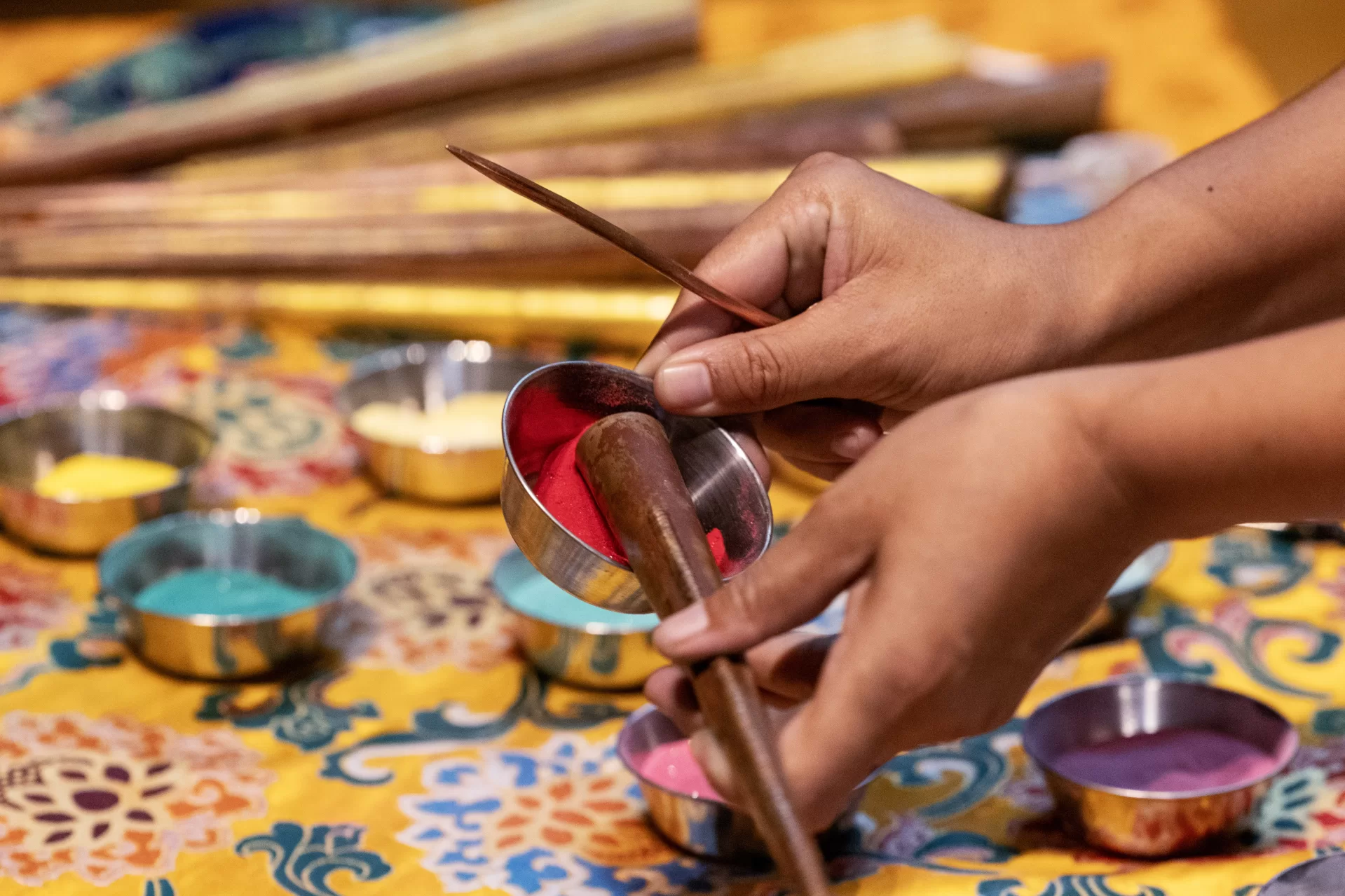
Other than their trips to Commons for meals and pauses for two sacred dances, three nuns worked tirelessly to fill in a vision they held only in their minds, rather than on paper.
“Memorization is a beautiful meditation,” Dasel said. “The nuns have trained in this for the last year intensively.” They studied five mandalas specifically, training with monks, and had to pass exams before the trip. “It’s mind training. And very rigorous. It’s much more rigorous than the training I did every day to play basketball at Bates” — when she was known as Lisa Blake — “or even writing a thesis.”
By Thursday afternoon the mandala was all done but for the outer circle, and a steady stream of visitors to Gomes — which was open to the public during the day — had continued to grow, thanks to coverage of the event in the Lewiston Sun Journal and on the local CBS affiliate, WGME.
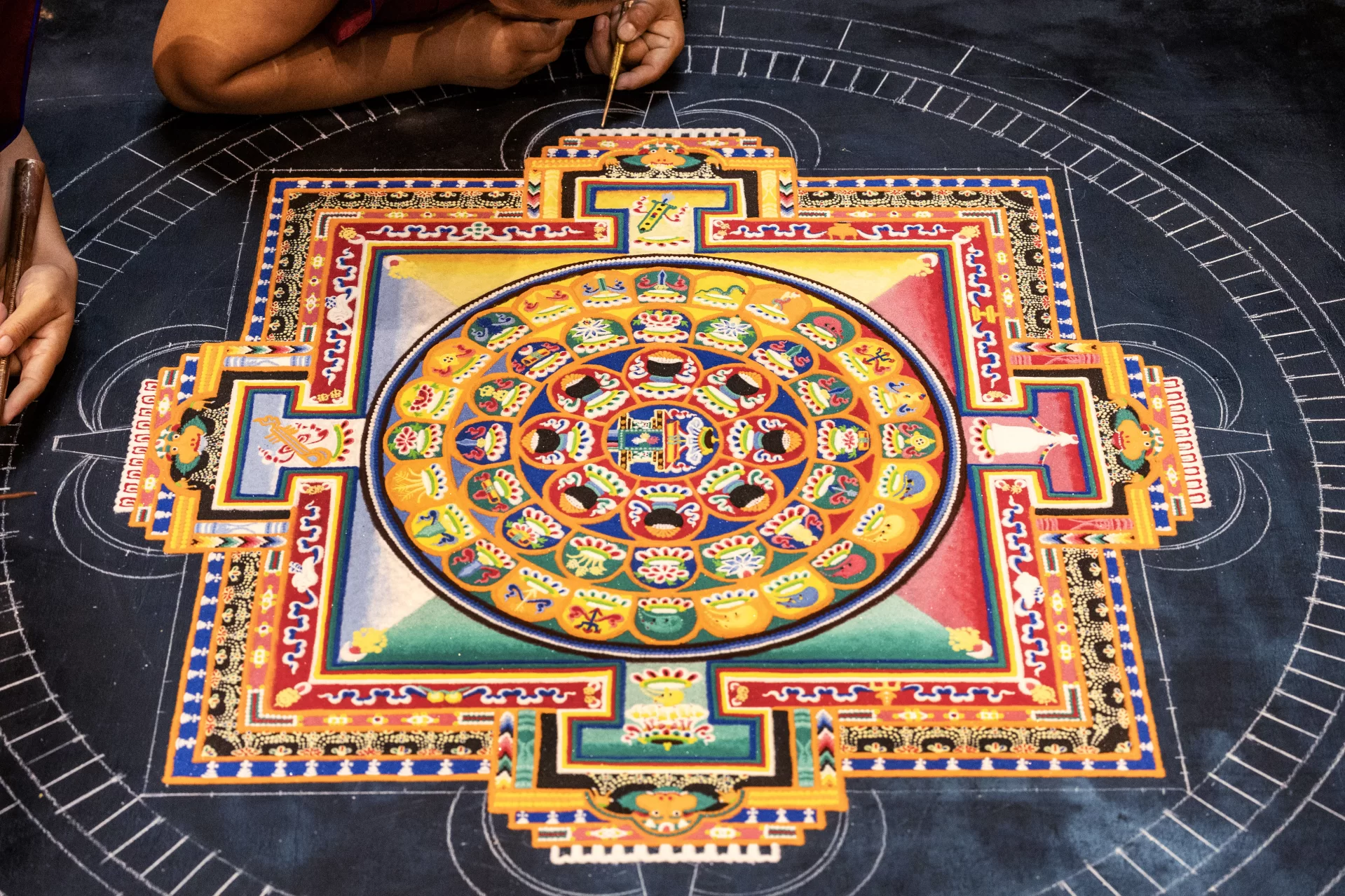
Some visitors sat quietly in the pews, watching from afar, while others edged up to the gold ribbon the nuns had put down to keep a little distance between their meticulous work and onlookers. Lewiston Mayor Carl Sheline stopped by to check on the progress and greeted Dasel.
Guatham Vijayan, a doctoral student who is on campus attending a Gordon Research Conference, said he’d seen the nuns in Commons and been curious. Growing up in India, it had been rare for him to have a chance to interact with Buddhists so he’d welcomed the chance to meet them and learn about their project. “Here I felt really comfortable talking to them,” he said.
The Jangchub Choeling Nunnery group would finish constructing the Medicine Buddha on Friday, Dasel said, bringing the blessings of clarity of the mind, the heart, and beauty into a physical manifestation intended for the communities of Bates and greater Lewiston.
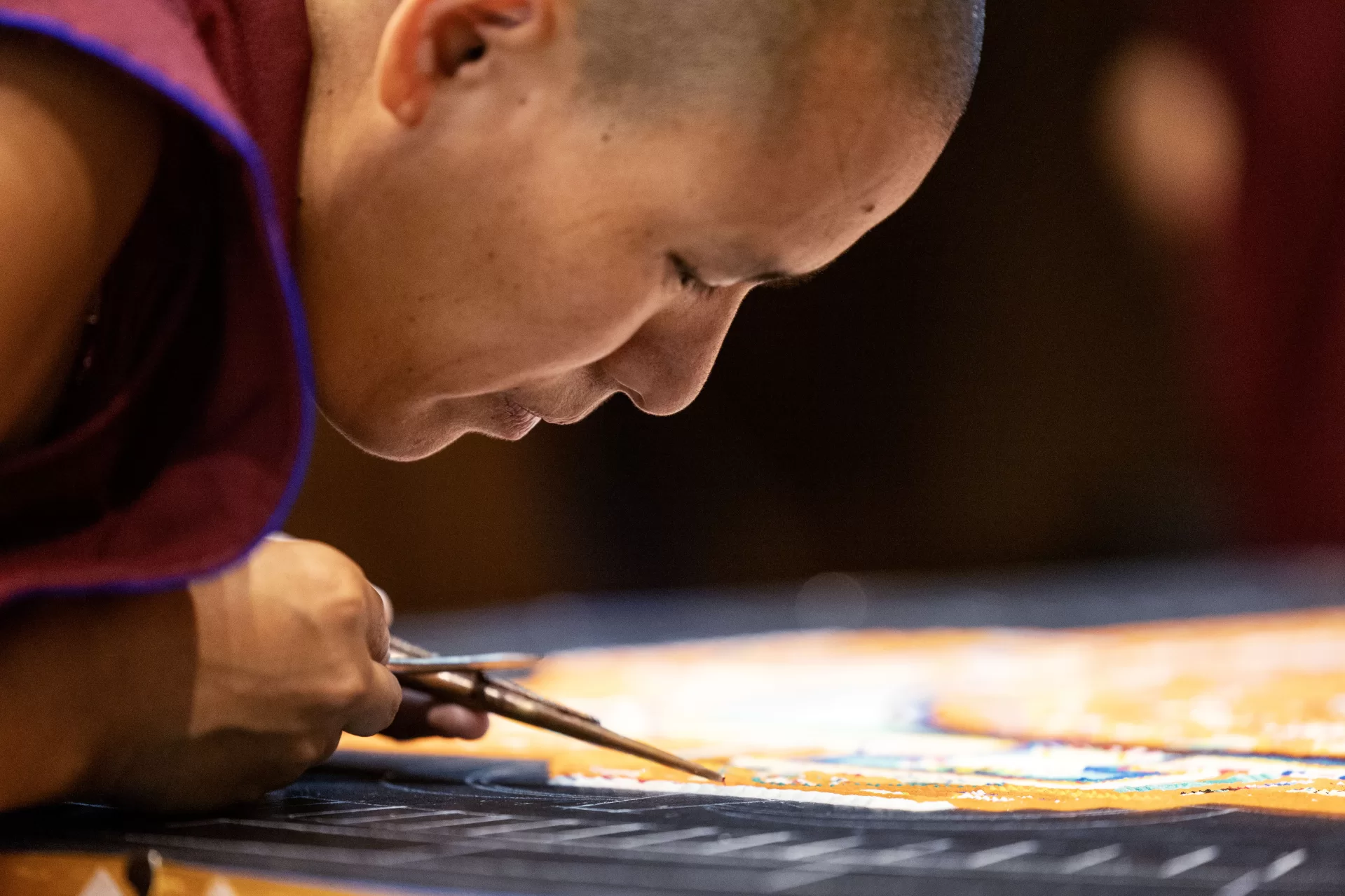
When Dasel, who serves as a spiritual advisor in Buddhism to the Multifaith Chaplaincy at Bates, learned that her grant application to the Frederick P. Lenz Foundation for American Buddhism to fund the nuns’ trip had been successful, she specifically asked the nuns to create a sand mandala to help the region with its ongoing recovery from the mass shootings of Oct. 25. Hence the very specific choice of the Medicine Buddha, known as the embodiment of healing energy.
Among the observers in Gomes, there was a palpable sense of gratitude for this gift, and also an engagement, a sort of silent cheering section. Associate Multifaith Chaplain Raymond Clothier has visited during the week, mostly supporting the nuns by delivering water, opening doors, and refilling paper towel dispensers. And observing the beauty being created not just in colorful sand, but in those interactions.
“My experience has been a gradual awakening to the realization that what is happening here is truly astounding,” Clothier said. “The art is stunning, but the process draws people into the moment: the clinking of the metal funnels as they are filled, the rhythm as they are finessed like a guiro to dispense sand, and the clanking as they are emptied back into the bowl.”
“It’s sacred movement as much as it is art,” he said. “The people who come to watch feel themselves becoming a part of something that is unfolding moment by moment, grain by grain. When they leave, they may not be able to articulate what they have just participated in, but they are grateful to have been a part of it.”
“I think it shows people where healing and beauty begin: by stitching life together from the inauspicious bits and pieces at hand.”
Associate Multifaith Chaplain Raymond Clothier
They become vested in what they’re witnessing. After the nuns huddled to discuss some element of the design, Linda Johnson, who had come from South Portland to observe, approached Dasel to ask about the nuns’ visibly apparent expressions of concern. Had something gone wrong? Maybe, Dasel said.

Sometimes, as the nuns created from memory, they weren’t satisfied with the outcome, and when that happened, the group would confer and perhaps even decide to erase and start a section over. If they had to do that, Dasel told Johnson, the age-old process was to invert their metal funnels, and carefully suck the element that wasn’t quite working away from the mandala. “The first vacuum cleaner maybe,” Dasel joked.
The mandala is “an expression of perfection and beauty,” Dasel said. Before the nuns dissolve it into the waters of the Puddle at the end of the week, they’ll offer grains of sand to those in the community who want to hold onto a small embodiment of the nuns’ visit. “It’s very blessed with this intention of creating healing.”
For Clothier, witnessing the process was a vivid illustration of how healing energy is generated. “I think it shows people where healing and beauty begin: by stitching life together from the inauspicious bits and pieces at hand,” he said.

Dasel said it can be hard for Westerners to experience the part of the process where a sand mandala is swept up and dissolved into water. “People are absolutely shocked when they see the dissolution ceremony entails collecting all those colors and wiping it all into a sacred box and then bringing it to a body of water and just letting it all go again.”
But despite the physical embodiment of the mandala being gone, the blessing remains — if you allow it to, she said. “Things in the material world are impermanent. So create and offer always your best, your perfection. But don’t cling to that, because it’s going to change.”
